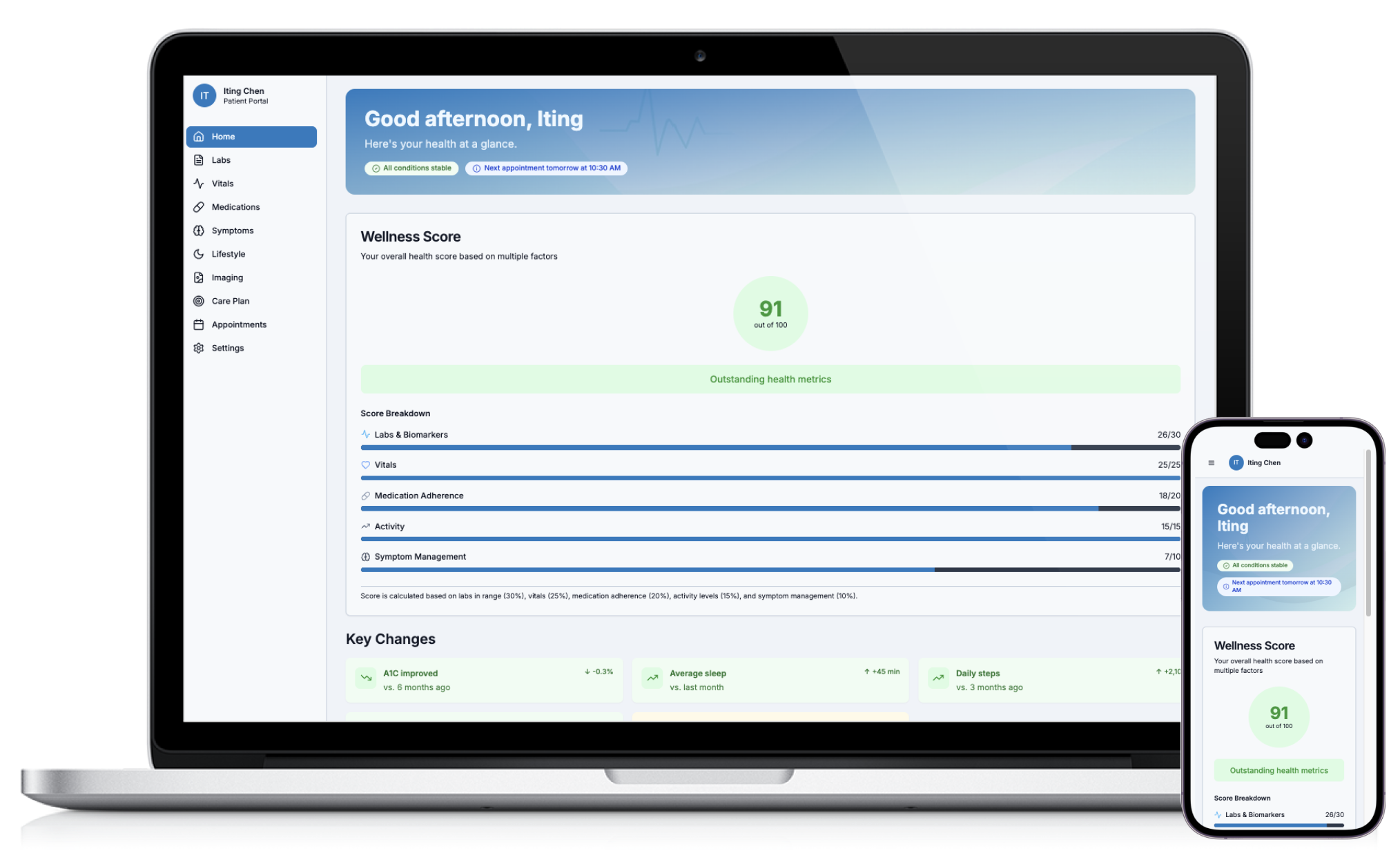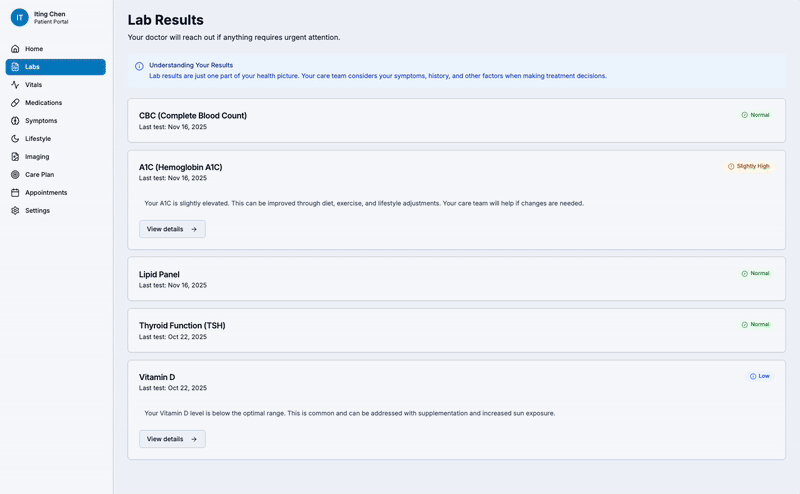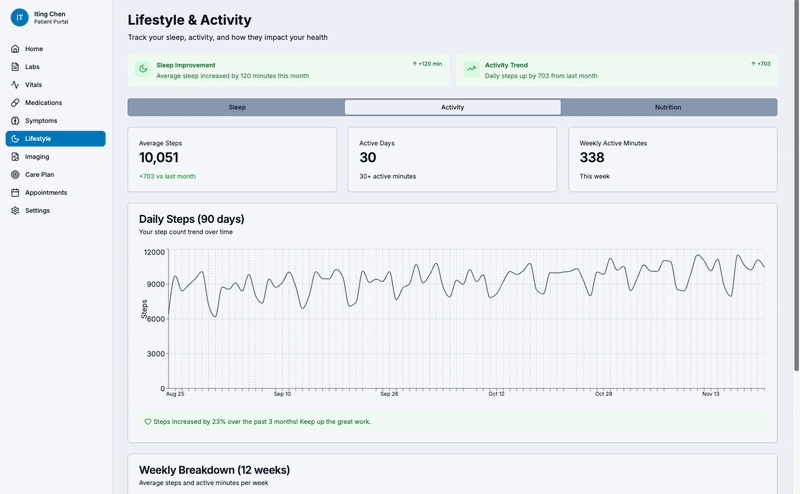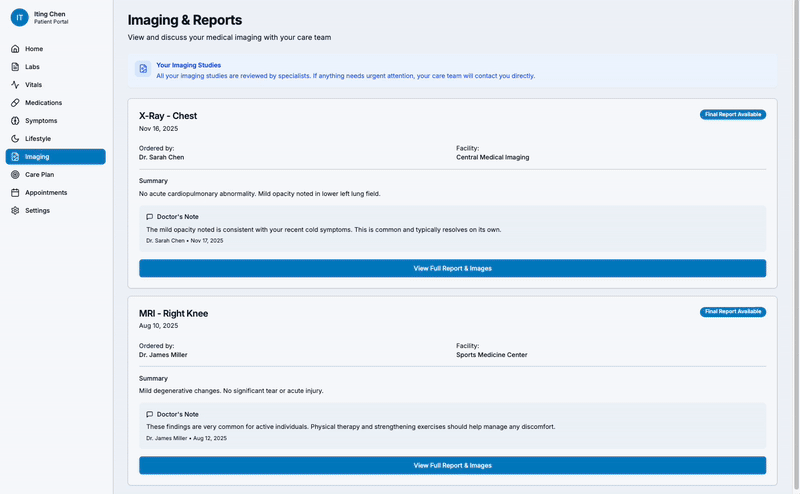HealthSense AI
A unified platform that turns complex health data into clear, actionable insights for patients.

A unified platform that turns complex health data into clear, actionable insights for patients.

This case study showcases my end‑to‑end design process for creating a inspired by Function Health, Apple Health, and modern preventive‑care systems. The platform consolidates medical records, labs, imaging, vitals, device data, and lifestyle insights into a single calming, empowering, and insight‑driven experience. My role spanned .
Note: This was a quick prototype created for design experimentation and concept exploration only. It is not a production product and was built to demonstrate UX thinking, data visualization, and AI-driven healthcare experience design.
Patients often receive medical data that feels overwhelming, clinical, and hard to interpret. With information scattered across multiple systems, it’s difficult to understand trends or make sense of what’s important.
I designed a unified patient platform that brings all health data into one clear, calming experience. It visualizes trends, explains results in simple language, supports imaging review with doctor comments, and offers AI-assisted insights to help patients understand their health with confidence.
Created modular components:
• Summary cards
• Trend charts
• Multi‑view lab explorer
• Imaging viewer (with annotations + doctor comments)
• Question panel
• AI insights panel
I established a visual language that feels:
• Calm
• Rounded
• Emotionally reassuring
• Designed AI features with strict safety rules:
• No diagnosing
• No predicting disease
• All explanations tied to doctor‑provided notes
• Always paired with clinical data transparency
A calm, insight-driven home screen that brings together the patient’s most important health information • labs • vitals • medications • AI insights • upcoming appointments • all in one clear, actionable snapshot.

A structured Labs page that groups related panels (CBC, CMP, Lipids), highlights result status at a glance, and lets users dive deeper with trend charts, doctor notes, and AI-simplified explanations.

A simple, clinically grounded visualization system that turns raw vital signs into clear trend lines, normal ranges, and easy-to-read insights. Each vital (BP, heart rate, weight) features a 30-day trend chart, device source tagging, and a friendly interpretation to help patients understand what the numbers mean.


A patient-friendly imaging viewer with zoom, pan, and brightness controls, doctor-annotated findings, and AI-assisted explanations. Users can review their scans, read clinician comments, and ask follow-up questions—all in one place.


This platform makes medical data easier for non-experts to understand through clear visuals, simple explanations, and AI-generated insights. It reduces anxiety around labs and imaging, highlights important changes, and helps patients ask better questions during appointments.
I learned how to simplify complex medical information while maintaining accuracy, and how to design AI features that support understanding without diagnosing. This project strengthened my approach to emotional-safety UX, clear communication, and trust-focused healthcare design.